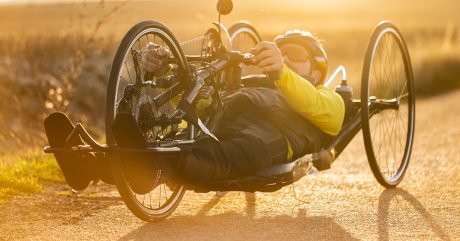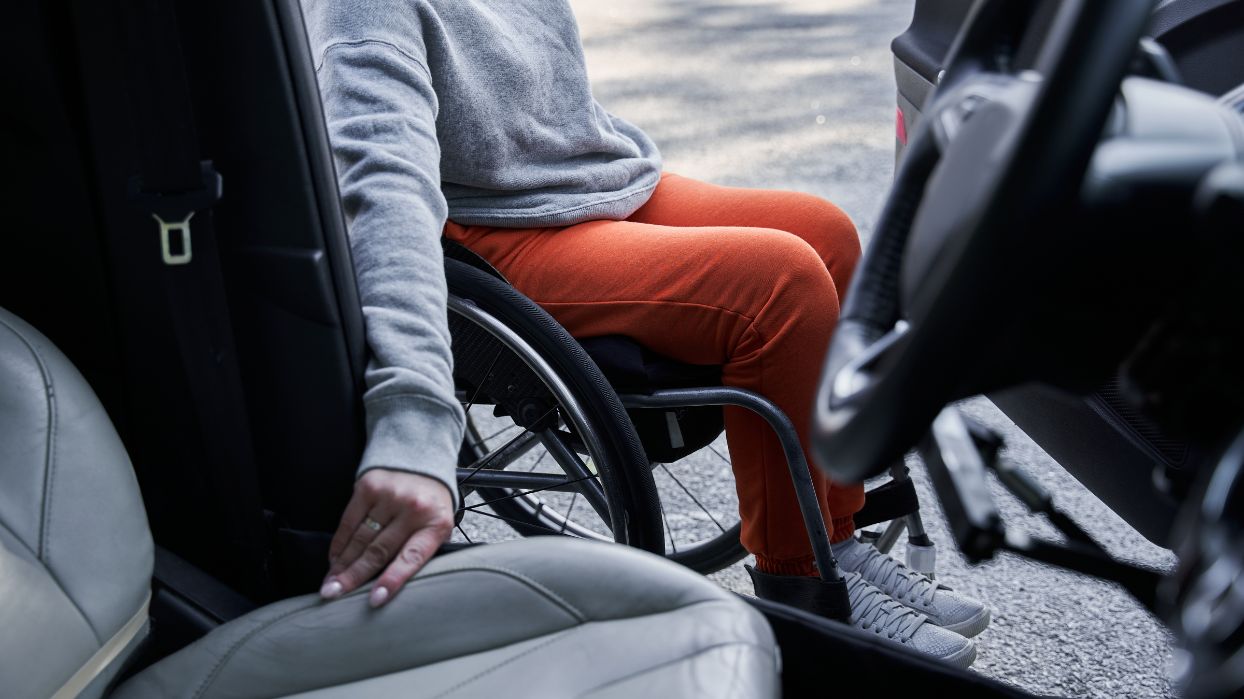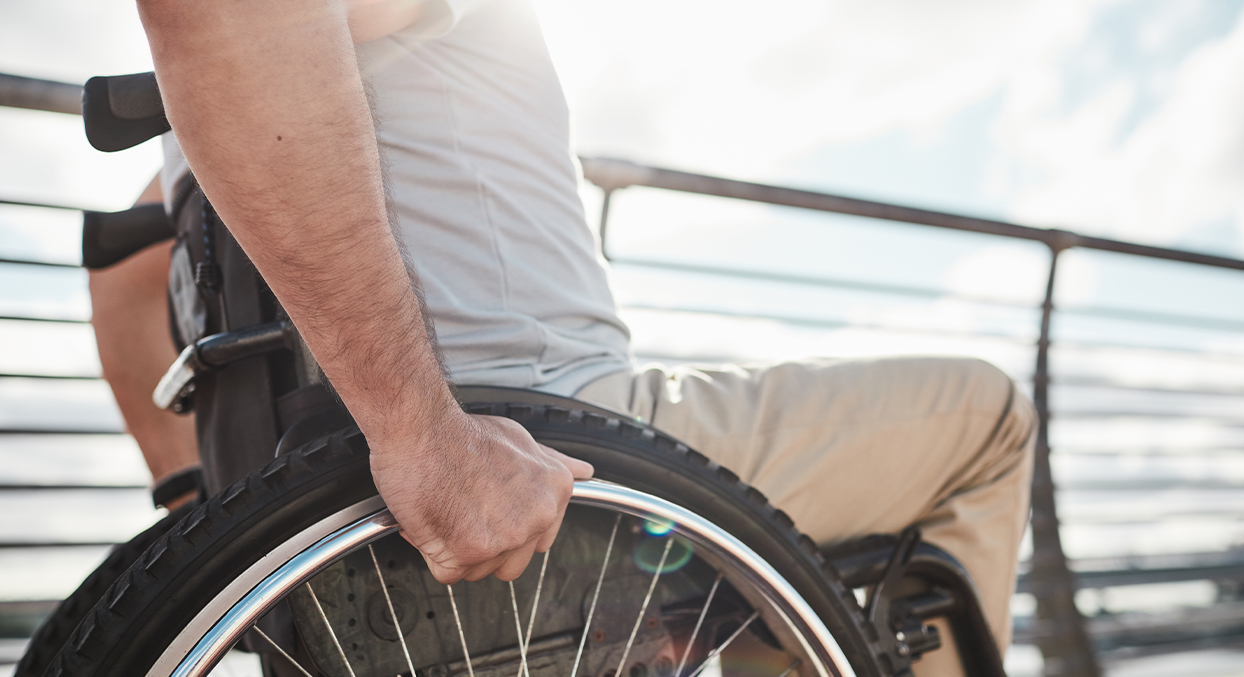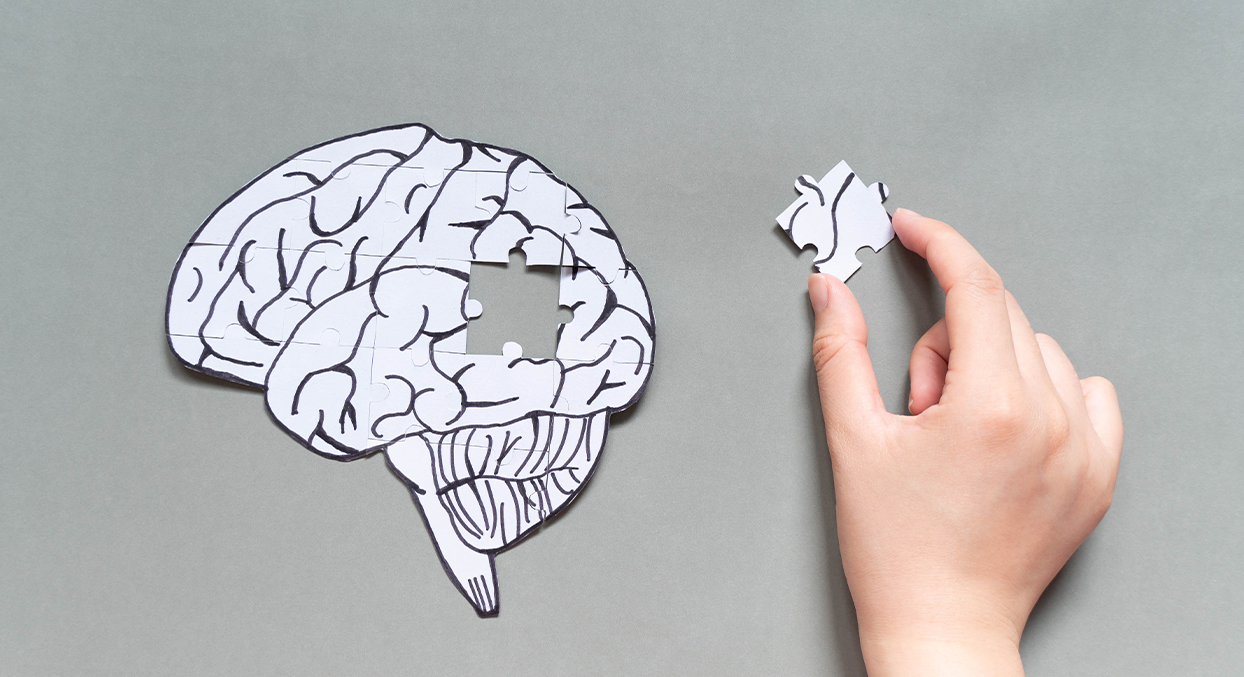Life after serious injury involves many ongoing challenges, particularly for those whose injuries prevent them from living their life as they used to. Many patients struggle with their lack of independence and their reliance on others to go about their daily lives.
In the first article in this series, we summarised the car adaptations available for people who have experienced serious injuries. To conclude this series, Natalya Salt and Gemma Laing summarise possible adaptations to other vehicle types. The key to all these adaptations is that they enable an individual to remain independent and return to the activities they enjoy after suffering serious injury.
Bicycles and motorcycles
There are a range of bicycle adaptations available now that cater to different needs.
Handcycles offer a way of cycling where the rider uses their hands to power the cycle instead of pedalling conventionally. Some handcycles are created by clipping a separate unit onto the front of an existing wheelchair, and others are based on cycling technology and built as a trike.
There are also examples of other bikes and motorcycles being adapted to have three wheels, which enables people who have suffered spinal cord injuries to continue to pursue their passion.
Members of Stewarts’ Pro Bono Team recently attended the WheelPower British Wheelchair Sport 2023 Inter Spinal Unit Games at Stoke Mandeville Stadium and met the team at Adaptiv Sports. This organisation started in 2020 and aims to partner with market brands to produce high-quality adaptive equipment, such as adapted mountain bikes for those with life-changing injuries. Professional mountain biker Renee Junga has been able to continue competing post-injury using a three-wheeled mountain bike where she can be strapped into her seat.
A former client of the Personal Injury team, Russell Lucier, was left with serious injuries following a motorcycle accident while riding his Harley Davidson. After securing damages in his injury claim, he was able to use some of the damages to pay for a custom Harley Davidson trike so that he could get back into motorcycling post-injury. Martin Clohisey, a former client, also had a custom trike adapted following serious injury. Martin was on a motorbike touring holiday with his partner when he sustained spinal cord injuries in a road traffic accident. The adapted trike enables him to ride again despite being wheelchair dependent.
Operating brakes and gears can be difficult if someone has problems with strength and/or the dexterity of their hands. Bicycles can be fitted with hydraulic disc brakes, which provide lots of power with minimal effort.
If someone finds it difficult to swing their leg over the top tube of their bike, they will need a bike with a low step-over. There are various small-wheeled bikes available now on the market that help with this, such as the Brompton.
One of Stewarts’ former clients, Graham Holder, was able to return to cycling following a transfemoral (above the knee) amputation with the purchase of a small-wheeled Brompton e-bike. He adapted the bike’s pedals and bought a cycling-specific limb, allowing him to return to the sport he loves.
Aviation: commercial and personal aircraft
The difficulties faced by those with disabilities when using air travel has been a topical issue this year, with paraplegic TV presenter and disability advocate Sophie Morgan and MP Marion Fellows campaigning to demand the government grants powers to the Civil Aviation Authority to fine airlines that fail to look after disabled passengers and their equipment. The campaign shed light on the number of wheelchair users who have had their wheelchairs damaged during transit while flying on commercial airlines.
Revolve Mobility are currently doing a fundraising campaign to bring the Revolve Air wheelchair to production. The Revolve Air is a folding wheelchair, with folding wheels, that is designed to fit universal cabin luggage standards.
Further, a company called Air4All is currently working with a subsidiary of Delta Airlines to introduce a new seat design for passenger aircraft that allows wheelchair users to sit in their own wheelchairs on the plane. This is great news for wheelchair users, as it will ease the process of air travel, removing the need for individuals to transfer from their wheelchair to another seat and reducing the risk of damaging their equipment during transit.
There are also adaptations available for personal aircraft, such as paragliders. A former Stewarts client, Gordon Basey, suffered a spinal injury, leaving him paralysed from the waist down. He was able to return to paragliding by adapting a fiberglass glider so that he can fly it using hand controls only, without the foot-operated rubber pedals.
Boats and sailing
Some organisations, such as Chesil Sailability in Dorset, offer a range of boats adapted to enable people with severe disabilities to sail. For example, one of the dinghies provided is a Hansa 303, a boat with a heavy centreboard that ensures stable and safe sailing, a manual joystick that makes for easy steering and a wide hammock or rigid seat with thoracic and neck support options. These boats are one of the three classes currently proposed by the World Sailing campaign to return sailing to the Paralympics.
Subscribe – In order to receive our news straight to your inbox, subscribe here. Our newsletters are sent out once a month.







